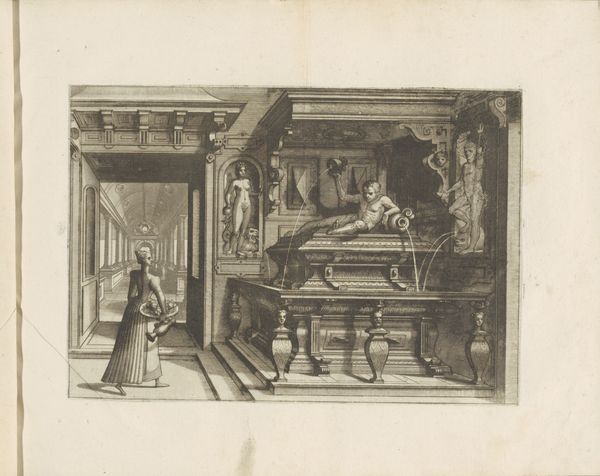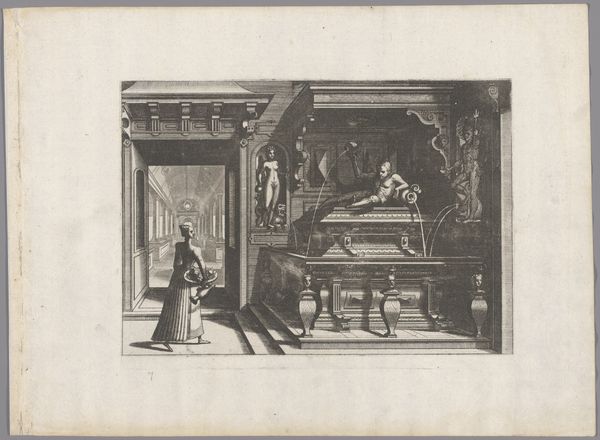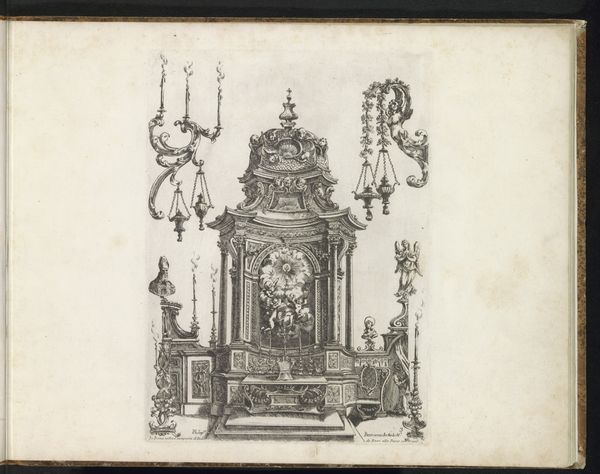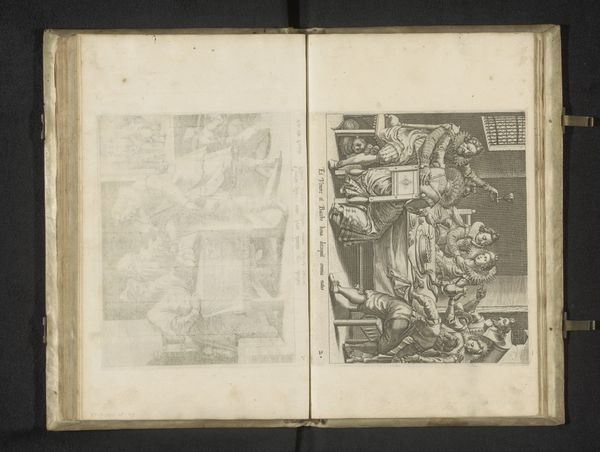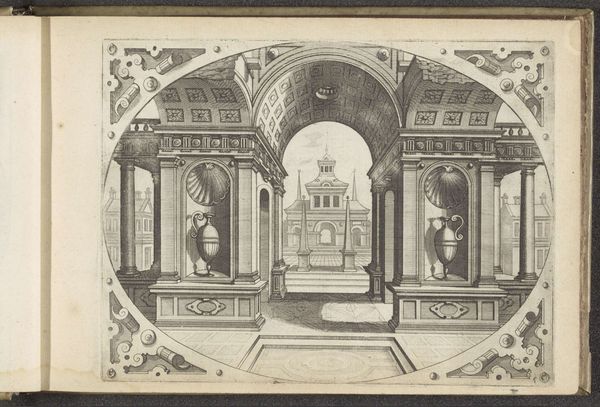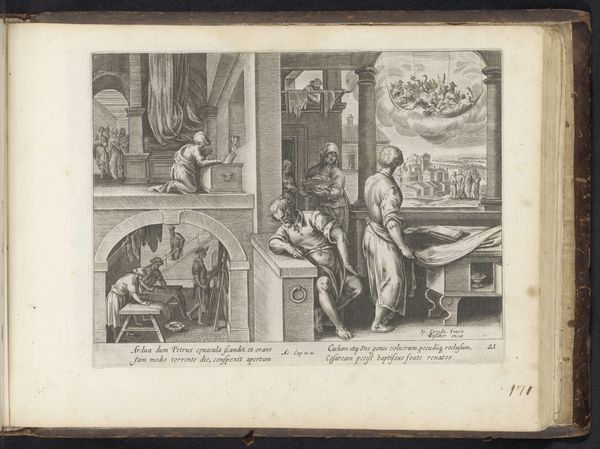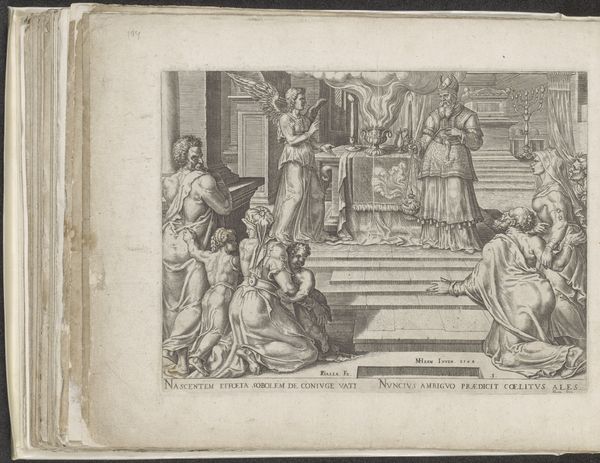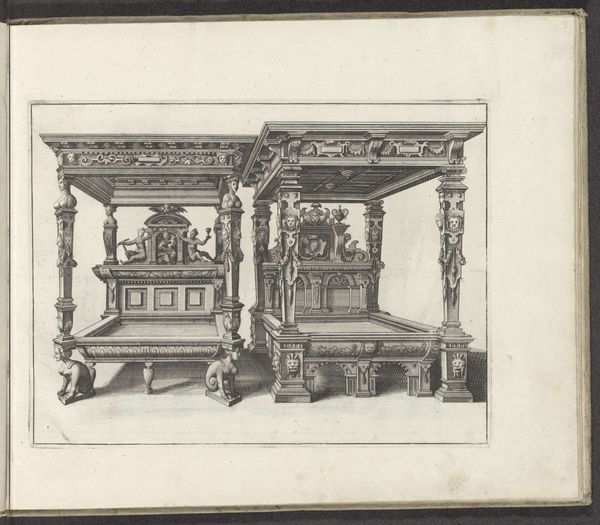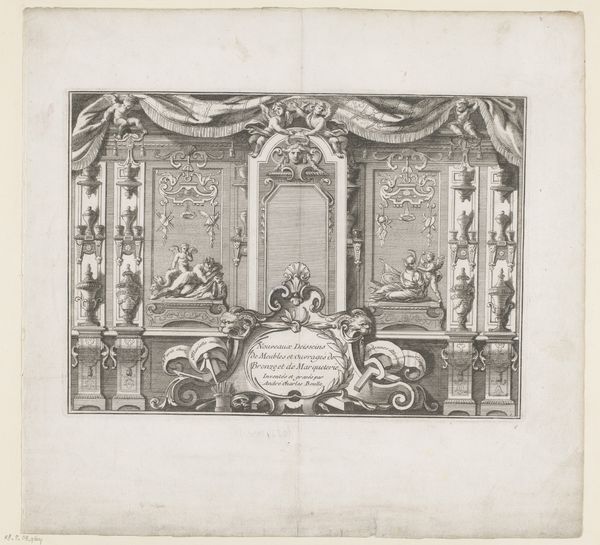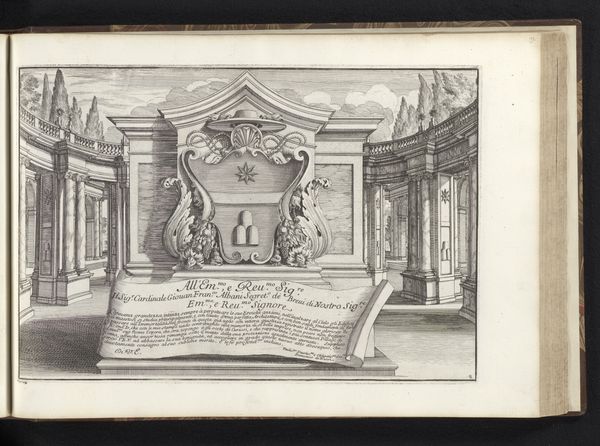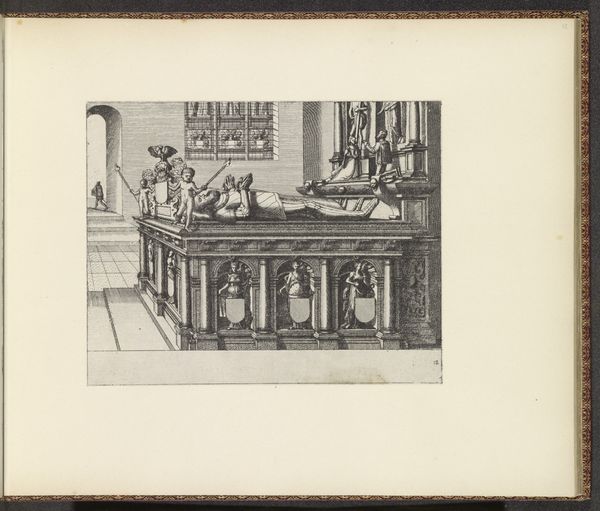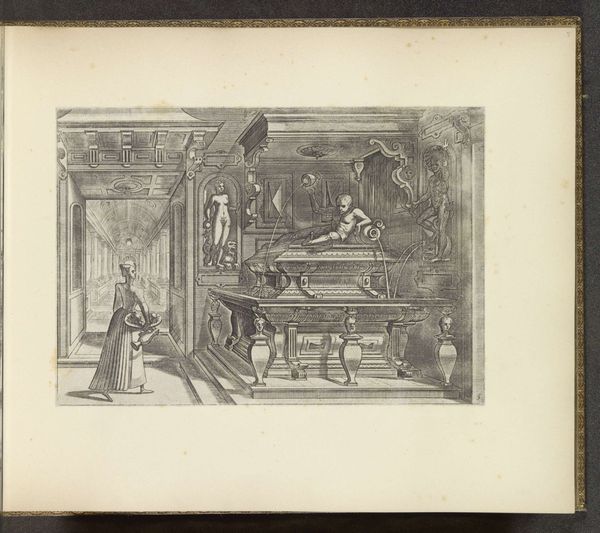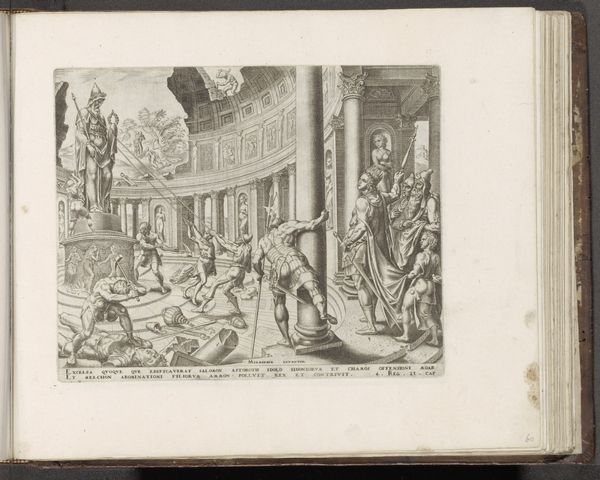
drawing, print, etching, engraving
#
drawing
#
medieval
# print
#
etching
#
old engraving style
#
mannerism
#
11_renaissance
#
cityscape
#
engraving
Dimensions: height 173 mm, width 248 mm
Copyright: Rijks Museum: Open Domain
Joannes van Doetechum created this print of a tomb-shaped fountain sometime in the 16th century, using the intaglio process of engraving. The artist incised lines directly into a copper plate with a tool called a burin. The quality of the line in this print is really precise. Doetechum varies the hatching and cross-hatching to create areas of shadow and depth. The engraved line is characteristically sharp and clean, which lends itself well to the architectural detail of the fountain, and the surrounding space. This print demonstrates a high degree of technical skill, the kind that required years of training. The engraver was a facilitator, reproducing designs conceived by others, and this process has imbued the print with a social significance, reflecting the labor and skill involved in its production. Ultimately, understanding this print involves appreciating the artist's mastery of the engraving process, and its role as a reproductive medium. This challenges traditional distinctions between fine art and craft, and invites us to consider the social and economic context in which it was made.
Comments
No comments
Be the first to comment and join the conversation on the ultimate creative platform.
